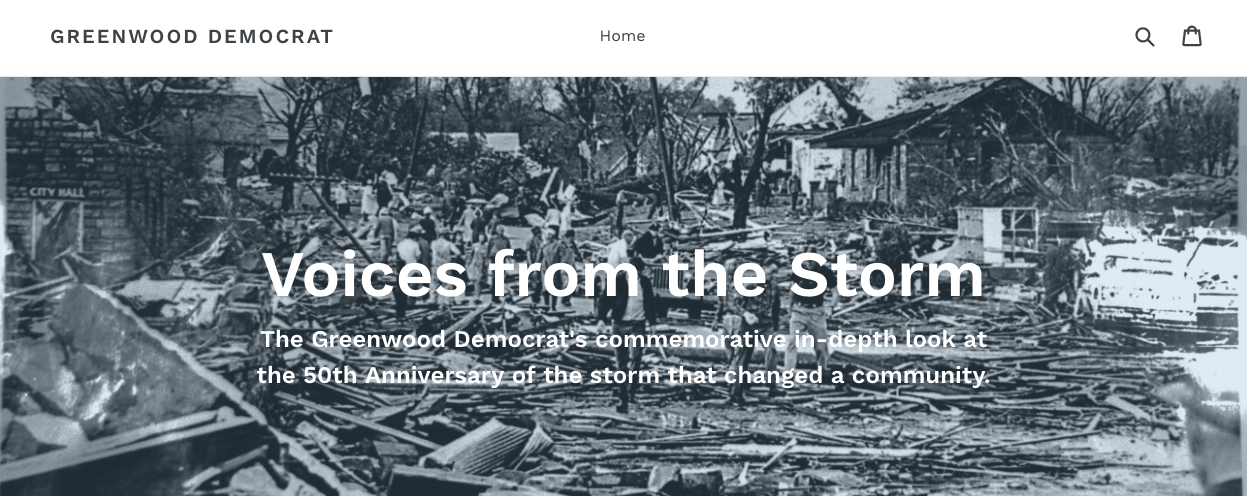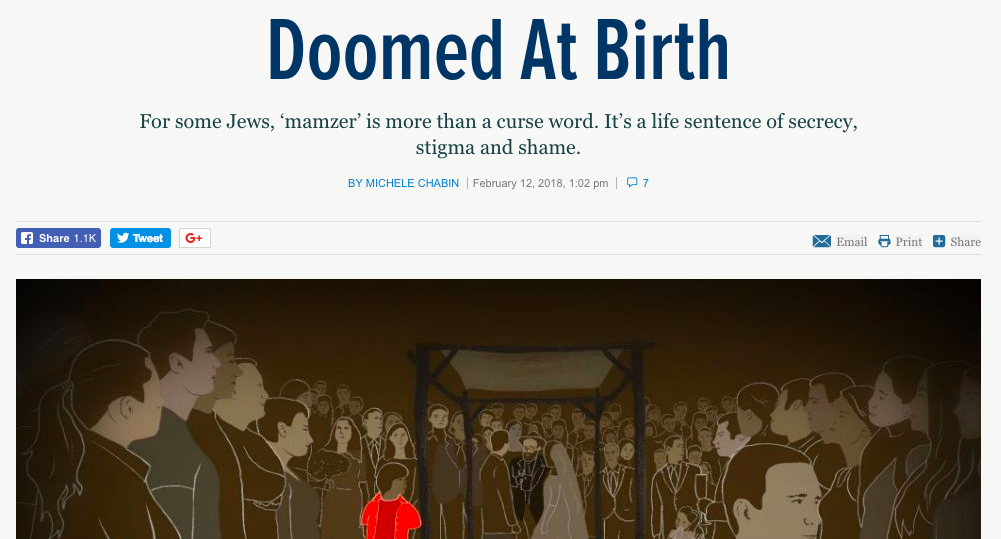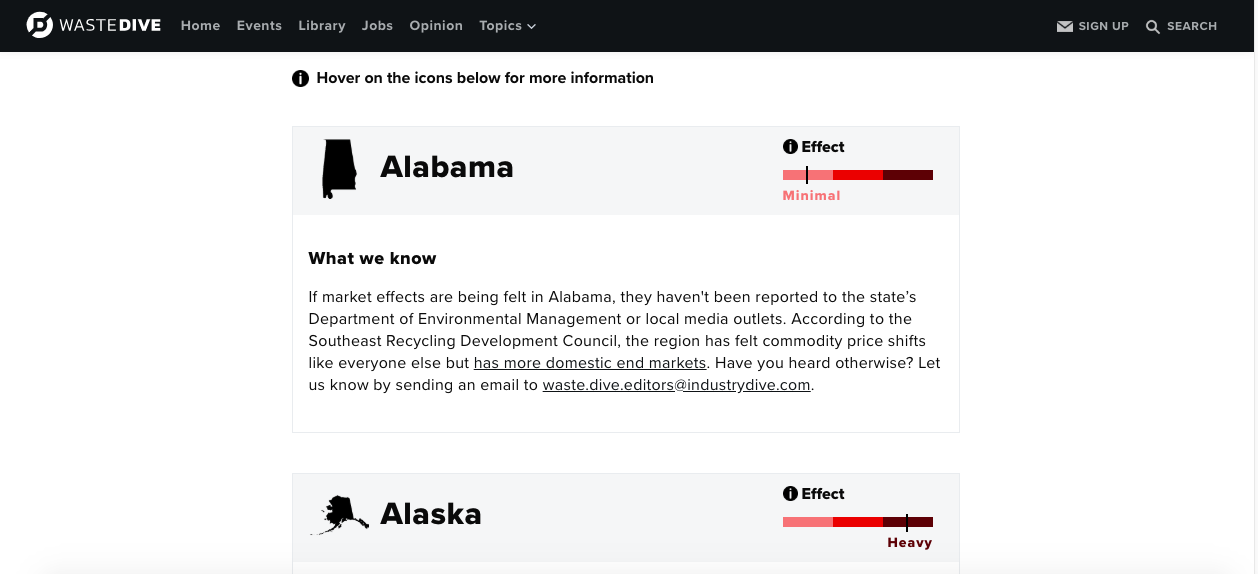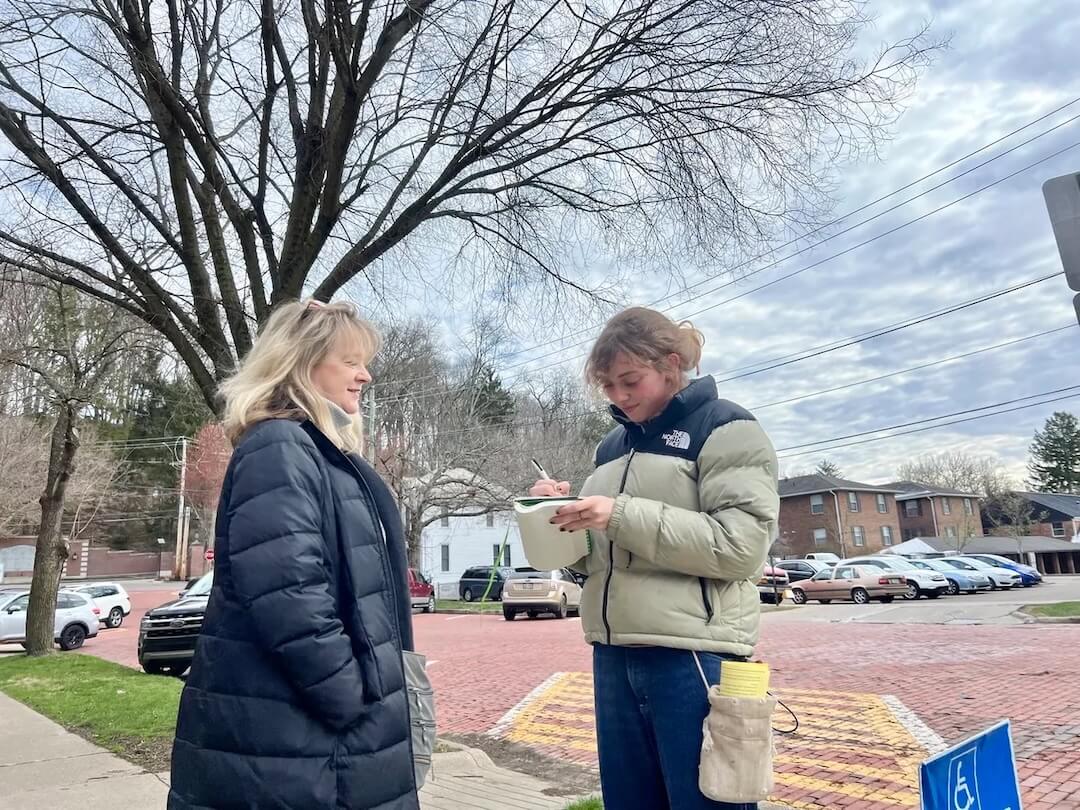Last week, we got to know a handful of ambitious projects from local newsrooms. This week, here’s more from newsrooms that are even smaller (including a newsroom of one).
I’m going to get out of the way quickly so you can dig in.

The newsroom: Lancaster (Ohio) Eagle-Gazette, about five in the newsroom
The project: Ongoing coverage that led to the mayor’s resignation.
How it got started: The reporting started after the mayor was elected, reporter Spencer Remoquillo said. “His wife was indicted for embezzling money and he was subsequently investigated. Kuhn faced minor felony charges relating to his taxes and was not forced out of office. Once his criminal case was closed, we requested all of the investigative records from the prosecutor’s office.”
The challenges: Time, other stories to cover, getting the documents and getting people in a small community to go on the record.
“We thought we’d have at least another week before the first print date, but a large metro paper had broken the story about Kuhn’s gambling the Sunday before ours was set to print. This development changed everything. We hunkered down in a room all week, finishing up interviews and cranking out stories as fast as we could write them to hit the daily deadlines for stories that could have taken us a couple days to write and perfect.”
How they did it: Remoquillo and breaking news reporter Trista Thurston divided the work and used color-coded Post-its to help them find the documents they needed. They worked closely with the photographer and while they wrote quickly, took their time on edits. And with people afraid at first to go on the record, one good story led to people opening up for more.
“With a newsroom this small, you have to have a team of dedicated reporters who care about their work and the community,” Remoquillo said. “This project showed just how much we care about our craft and the importance of breaking big stories in small newsrooms."

The newsroom: The Greenwood (Arkansas) Democrat, newsroom of one
The project: "Voices from the Storm"
How it got started: After learning about a project from Topeka, Kansas, that looked back on a devastating tornado, editor Dustin Graham brought the idea to his publisher for the anniversary of a storm that hit Greenwood in 1968. It became a book, an event and a documentary.
The challenges: A lot of the information was public. Graham and publisher Summer Aina have newspaper skills, but not the ones they needed for events, a magazine or a documentary.
How they did it: They worked with a college student studying videography for the documentary. And with the stuff they didn’t know, Graham said, “we got around the obstacles through work and the knowledge that the community would be the judge of our work and so we had to do it right and we only had one chance to do it correctly.”

The newsroom: The Southern Illinoisan, newsroom of four
The project: "Chaos in Cairo"
How it got started: Molly Parker, and later coworker Isaac Smith, have closely covered the local housing authority in Cairo, Illinois, including through stories, a documentary and photography.
The challenges: Smith and his partner, Steve Matzker, hadn’t ever created a long-form narrative through video. Daily work. Cairo is an hour from the newsroom. Sources often were hard to reach because they didn’t have reliable phone numbers. Also, Parker said, balancing the coverage with all the positive things happening in Cairo at the same time.
How they did it: “To remedy these things we just worked really, really hard," Smith said. "That’s kind of cliché to say, but it’s really true. We had incredible support both from the community but our editorial staff and editors. There was a lot of weight thrown on the other reporters at times and they chipped in to help make the series work.”
Since the start of the year, Parker has worked with ProPublica through a grant for her coverage. That helped the paper hire another reporter for the year.

The newsroom: Glenwood Springs (Colorado) Post Independent, staff of 10
The project: "Immigrant Impact"
How it got started: Though the newsroom is small, “we're occasionally able to prioritize more in-depth reporting projects, thanks to planning and, in several cases, partnership with a nearby sister paper,” said features editor Carla Jean Whitley.
The challenges: Resources and time.
How they did it: Partnering with The Aspen Times, both newsrooms have been able to combine resources and share the work.

The newsroom: KJZZ, Phoenix, staff of about 30
The project: “The State of Aging in the Valley"
How it got started: After producing a series on intimacy and aging, an editor pitched KJZZ’s Kathy Ritchie with the idea of a bigger series on aging.
The challenges: Staying organized and coping with the emotions involved with reporting on a tough subject.
How they did it: Organization, communication and support from the whole company. “I have to say, having the support of not just the entire newsroom, but our marketing and development teams meant we were able to secure a sponsorship opportunity, we were able to heavily promote this special series and we were able to host an afternoon Q&A with Dr. Pauline Boss, who wrote the book, ‘Loving Someone Who Has Dementia,’” Ritchie said. “That event rounded out the entire series.”
The series was also turned into a one-hour podcast, a first for the station.

The newsroom: The New York Jewish Week, staff of 12 to 15 in editorial
The project: "Doomed at Birth"
How it got started: Staff writer Michele Chabin wanted to write about mamzerut, “arguably the biggest and most ancient taboo in Judaism, after a very small handful of feminist activists in Israel began to speak openly about the issue for the very first time.”
The challenges: Securing funding and finding people willing to be interviewed.
How they did it: Chabin was awarded a diversity fellowship and grant from the Schuster Institute for Investigative Journalism and the Fund for Investigative Journalism. To find sources, she reached out to both organizations and rabbis who work with families in the rabbinical court system.
“In all, it took me a year to research and write the story,” Chabin said. “I chose to have the story published in the NY Jewish Week because I wanted it to send shock waves through the Jewish community. Or more specifically, the rabbinical establishment. I'm confident it would have found a home in a larger mainstream publication, but I felt that the Jewish Week, a respected local Jewish newspaper, would make a bigger impact. The article was just translated into Hebrew with funding from Schuster and I am looking for a Hebrew publication that will publish it in Israel.”

The newsroom: The Bristol (Virginia) Herald Courier, newsroom of seven
The project: "Addicted at Birth"
How it got started: Staff took on a seven-month, statewide reporting project examining babies with neonatal abstinence syndrome.
The challenges: Figuring out why NAS births nearly tripled in four years in the region. Sifting through lagging research.
How they did it: Interviews with parents, NICU doctors and FOIA requests. “The newsroom’s efforts to sift through the data took them to the Virginia Department of Health; Virginia Hospital & Healthcare Association; Virginia Office of the Attorney General; Hospital Discharge Data System; Tennessee Department of Health; Tennessee District Attorney’s Office; Tennessee Department of Healthcare, Finance, and Administration; and to records from Sullivan County, Tennessee, and Niswonger Children’s Hospital in Johnson City, Tennessee,” managing editor Rob Walters wrote in a nominating letter for the Scripps Howard Award for Community Journalism, which the project won. “As the project came together, news team members realized they were on the cusp of something unexplored, underserved and unfamiliar across both state lines.”

The newsroom: Starnes Publishing, hyperlocals in Birmingham, Alabama, staff of 11
The project: "A Bridge Too Far"
How it got started: “After the bridge fire in Atlanta early last year, my curiosity was piqued about the state of Birmingham bridge infrastructure,” said managing editor Sydney Cromwell.
The challenges: Juggling reporting with regular work and editing. Sifting through data and figuring out how to help readers understand it.
How they got around it: “I got help from other reporters, our designers and our web person to make some really helpful graphics and maps, as well as an interactive website,” Cromwell said. “It's by far the most ambitious thing I've ever done.”

The newsroom: Waste Dive, team of 2
The project: "What Chinese import policies mean for all 50 states"
How it got started: “Waste Dive has been busy lately covering the implications of new Chinese import policies that have banned 24 recyclable materials from being exported to China. This has completely turned the recycling industry on its head and has affected each U.S. state to a varying degree — some counties in states like Oregon have completely eliminated recycling programs, while other counties have had to adjust contracts or raise the price of recycling collection,” said Kristin Musulin, an editor at Industry Dive, a B2B with 14 industry verticals. Her team worked with an Industry Dive designer to create a 50-state tracker.
The challenges: Covering the impact at the local level in a comprehensive way. Fitting all the work into a reasonable workday.
How they did it: Divide and conquer. “We called as many sources as possible for each state, and also made the request for tips ongoing and very clear. By making our readers understand right off the bat that this was a collaborative effort between Waste Dive and the audience, we established a sort of buy-in,” Musulin said. “The more the tracker is utilized, referenced, and updated, the more readers want to send in tips and get involved.”
On Monday night, the tracker was cited on HBO’s Vice News Tonight.
“This was a big deal for us because, while mainstream audiences are not our target, it shows this project has really been an impactful resource for folks trying to learn about these policies.”
Thanks to everyone who sent their awesome projects. I'm not surprised, but so happy to see it all. Next week, we'll wrap this up with some lessons from all this. In the meantime, check out Democracy Fund's brand new Engaged Journalism Lab and API's lessons from weather forecasters. See you next week!
Correction: In an earlier version of this story, Kristin Musulin mentioned that counties in some states including Oregon and California have eliminated recycling programs. That's incorrect. No counties in California have completely eliminated the programs, and her quote has been updated.









